
sign, Scorpio. Both the stone and the sign appear hard, but we recommend
always handling with care. You may think of the jewel as tawny in color, or
perhaps the heat-treated blue shades, but we search the earth for the rarest of
these gemstones, in tender peaches, pinks, honey-golden and fiery orange
shades. It’s a magnificent gem with a mysterious legacy.
intriguing treasures.
An 8 on the Mohs scale, Topaz is surpassed in hardness only by Diamond,
corundum and chrysoberyl. But handle with care: the cleavage formation of
Topaz actually makes it brittle, and, in spite of its hardness, it’s possible to chip
or fracture a Topaz in spite of its impressive Mohs rating.
Astrologers agree that this contradiction – hard, yet fragile – makes Topaz the
perfect birthstone for the sun sign Scorpio, which falls in November.
The Scorpion makes a formidable appearance with pointed claws, prehistoric
armored body and dreaded stinging telson, or tail-barb. But Scorpio is, after all is
said and done, a Water sign, the element known for intuition and emotional
sensitivity.
Fossil specimens unearthed in Wisconsin in 1985 have recently proved that
scorpions prowled both the sea and land 437 million years ago, and little has
changed about this powerful arachnid since.
[https://www.sciencedaily.com/releases/2020/01/200116121903.htm]
Scorpio appears tough, but harbors a deep secret: “I’m breakable.” Like the
precious Topaz itself.
So keep tender feelings in mind when gifting a Scorpio, and when handling
Topaz. These gems must never be cleaned with ultrasonic devices or abrasives.
ROYAL RUSSIAN ANCESTRY
Topaz is a gem with a fascinating backstory.
Topaz is a pleochroic gemstone, meaning that it can display many colors at
once, depending upon the available light source. In its natural state, most Topaz
is a golden, tawny yellow-brown. The presence of chromium during formation
produces spectacular pinks and reds.
The most prized Topaz is called the Imperial Topaz, claimed and named for the
Czar’s family. At the time, Russia’s Ural Mountains were the world’s leading
source for the gemstone, which was discovered in brilliant orange, peach-pink,
and honey golden shades. Only the Czar and his family were permitted to own
the precious gem.
Today, Blue Topaz, which are almost always irradiated and heat-treated, are
more common. Swiss Blue Topaz, a pastel azure, and London Blue Topaz, a
deeper shade, are perhaps the most familiar and popular colors.
In fact, Blue Topaz specifically is the birthstone for December, while Topaz of
any hue is November’s gem. Blue Topaz is also the gemstone used to celebrate
4 th and 23 rd wedding anniversaries.
The origin of the gemstone’s name may be Greek, or Sanskrit, depending upon
which scholars you prefer. The Roman writer Pliny, circa 100 C.E., suggested
that the gem got its name from an island in the Red Sea, now called Zabargad or
St. John’s Island, that was called Topazios in the original Greek. Amusing side-
note: the gemstones found there turned out to be Peridot. The Sanskrit terms
“topas” or “tapaz” mean fire, and in classical India, Topaz was often worn above
the heart to assure the wearer’s intellgence, beauty, and long life.
In ancient Greece, Topaz was worn for strength, while in Europe during the
Renaissance, people believed that Topaz could break the hold of sorcery, spells
and enchantment, based upon the stone’s ability to change color.
Brazil and Northwestern Pakistan are currently the site for much of the world’s
Topaz. Katlang, Pakistan is the source of an especially sought-after color known
as cyclamen pink, named for the fragrant flower and its violent-tinged pink shade.
Topaz is also found in many parts of Asia and Africa, as well as Russia and the
USA.
GUILTY PLEASURES and TREASURES: A Topaz Telenovela
The gossipy history of precious gems is an oft-unsavory soap opera that spans
centuries, riddled with theft, jealousy, intrigue, confusion, deception, scandal,
mystery, melodrama, murder, outrage, and outright plunder. The Topaz is no
exception, including the unsolved puzzle of the so-called Braganza Diamond,
named for the ruling dynasty of 19 th century Portugal.
One of the more colorful stories surrounding the discovery of this by-the-way-
missing gem is that three Brazilian ex-convicts who had been banished to the
jungles happened upon the stone while panning for gold in the Abaite riverbed
near Minas Gerais in 1797.
The enormous gemstone was naturally assumed to be a Diamond, but it turns
out that the uncut, rough 1,680-carat jewel was most likely in fact a Topaz
crystal.
Or so the experts say. The fact of the matter is that no gem experts have ever
had an opportunity to examine the elusive gemstone.
And, the carat-weight is simply an estimate.
In any case, the discovery of the crystal won the trio a royal pardon, and the gem
soon found its way across the Atlantic to the royal palace of Portugal’s mentally
deranged Queen Maria Isabella.
As the Braganza empire crumbled, the royal family fled to the Portuguese colony
of Rio de Janeiro, taking the hefty jewel with them.
This gem is also called the Prince Regent Diamond, named for the young
sovereign John, who would become Portugal’s king. As fate would have it, the
heir to the throne was a connoisseur and collector of fine gems. And as King,
John VI is said to have worn the gigantic crystal, drilled and suspended from a
gold chain, as a monumental pendant on state occasions.
Upon his death in 1826, the jewel had disappeared.
Where did it go?
Today, gem authorities are uncertain. For generations, it was assumed that the
huge gem was set in the Portuguese crown. However, King John VI’s crown on
display in Lisbon today is made of Brazilian gold in 1818, designed and
manufactured in Rio, and is not adorned with a single gemstone!
While the gem may be safe and snug in the Portuguese treasury, some accounts
state that the Portuguese government denies any knowledge of the stone’s
existence.
Theories concerning the whereabouts of the stone are as colorful as the histories
of its origins.
Was the gem stolen during the invasion of Portugal by Napoleon’s troops? One
theory suggests that the French general, Duke of Abrantes, sent the stone along
with 40,000 Portuguese gold coins, back to his wife in France.
Did John VI deliver the gem to either of his viciously competitive sons upon his
return to Portugal in 1821? If so, which one – and did they pawn the gem for war
supplies?
Was there more than one? Conflicting records reveal that large gems actually
were found in the general vicinity of Brazil’s Abaite river – one in 1741, one in
1797. If there were two, was one actually a huge Diamond?
Some conjecture that, when the possibility that the gem was a Topaz rather than
a Diamond emerged, the stone was destroyed.
And perhaps it’s a Diamond after all. At this point, there is no way to be sure.
Existing eyewitness accounts vary wildly, with some authors calling the stone
white, others describing it as deep yellow in color, some comparing it in size to a
goose-egg, while other versions describe it as smaller in scale.
There are many other massive Topaz specimens in the world’s museums, which
may at least be verified in terms of their size, weight and color.
Many are from Brazil: the emerald-cut El Dorado Topaz at an extraordinary
31,000 carats, the Lua de Maraba at 25,250, the American Golden Topaz at
22,892.5, to name but a few.
When you wear a Topaz from our exceptional collection, there is far less
mayhem involved. We accompany each gemstone with complete
documentation, so you aren’t wondering about the details.
But we encourage you to wear your Topaz with a sense of adventure. Who
knows where your gemstone will lead you?

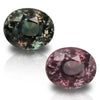 Alexandrite
Alexandrite Amethyst
Amethyst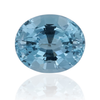 Aquamarine
Aquamarine Chrysoberyl
Chrysoberyl Demantoid
Demantoid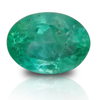 Emerald
Emerald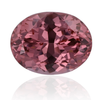 Garnet
Garnet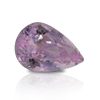 Kunzite
Kunzite Paraiba
Paraiba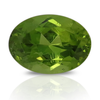 Peridot
Peridot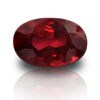 Ruby
Ruby Sapphire
Sapphire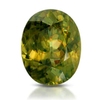 Sphene
Sphene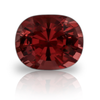 Spinel
Spinel Tanzanite
Tanzanite Topaz
Topaz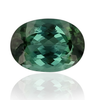 Tourmaline
Tourmaline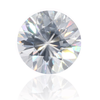 Zircon
Zircon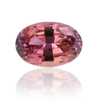 Zoisite
Zoisite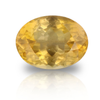 Rare Gemstones
Rare Gemstones Heart Shape
Heart Shape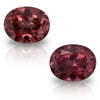 Matched Duo
Matched Duo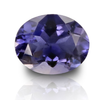 Everyday Candy
Everyday Candy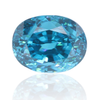 Insta Therapy
Insta Therapy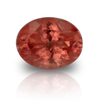 Mini-Splurge
Mini-Splurge